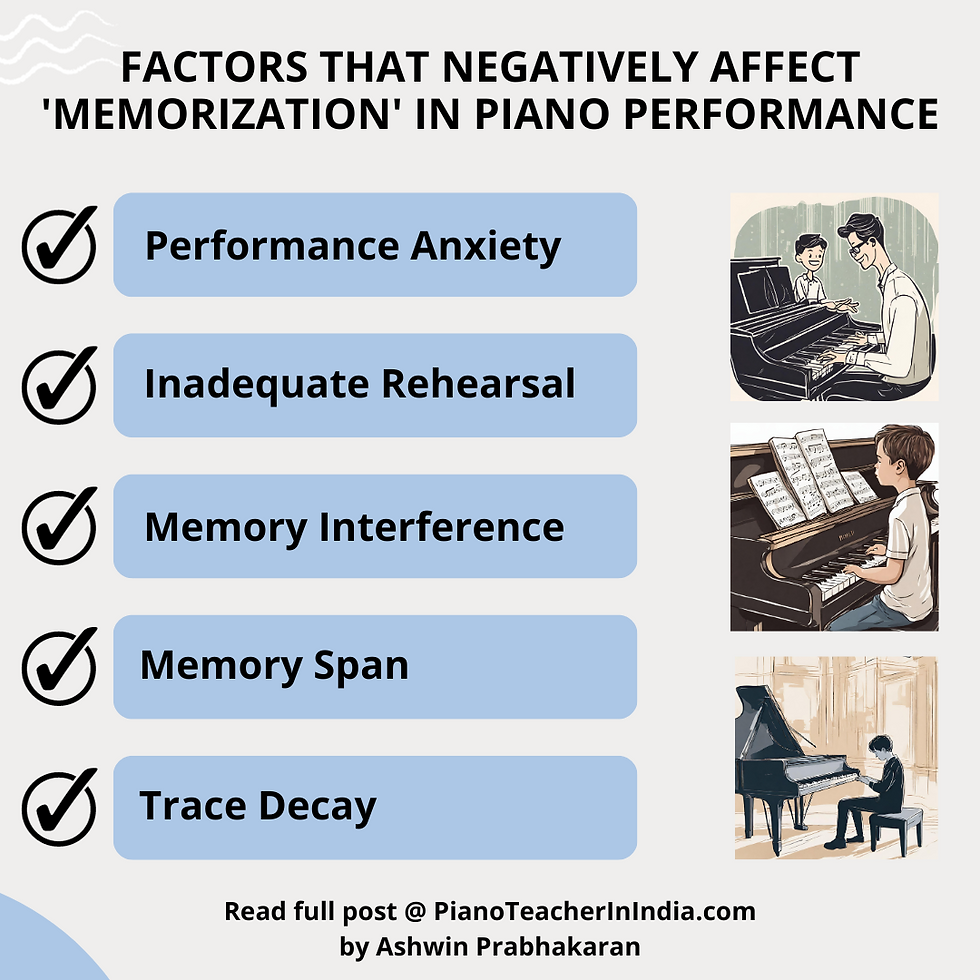Diagnosing Poor Practice
- Ashwin Prabhakaran
- Jan 9, 2024
- 1 min read
Updated: Jan 15, 2024
A mistake I made early on in my career with my Intermediate/Advanced Level students was to believe that they would not come back with Errors (because I thought that they knew how to 'Read' music and hence would never 'mis-read' anything), that is a lesson I have since learnt.
Even Intermediate and Advanced students can 'mis-read' Pitches and Rhythms, and it gets more difficult to fix them due to the volume and density of the work required to unlearn and relearn. Also they may 'Read' the passage correctly in class, but after a week of practice they'd show up with weird/random errors which seems to have cemented into their playing.
My general Teaching Philosophy is to make learning Error-free. Hence I like to preemptively look out for Problem Areas in order to make the learning optimized. However, often identifying problem areas alone is not enough.
After a week or two of practice, difficult sections and their exact locations begin to emerge.
The cause of the problem may often be different from what may be anticipated.
for example, Missed notes may be caused by rhythmic difficulty, or, Rhythm Errors may be caused by poor alignment of the hand-arm.
So, simply correcting the errors, instead of going to the Root Cause would result in similar problems in the future.
Problems can be caused by the following:
Misread Pitches
Misread Rhythms
Misinterpreting a Sign/Symbol
Practicing at incorrect Tempi
Using Awkward Fingering
Playing with a lot of Physical Tension
Using the body inefficiently
Diagnosing and resolving the problem areas early on in the Learning curve makes a huge difference as the student progresses toward Intermediate and Advanced Repertoire.



.jpeg)

Comments